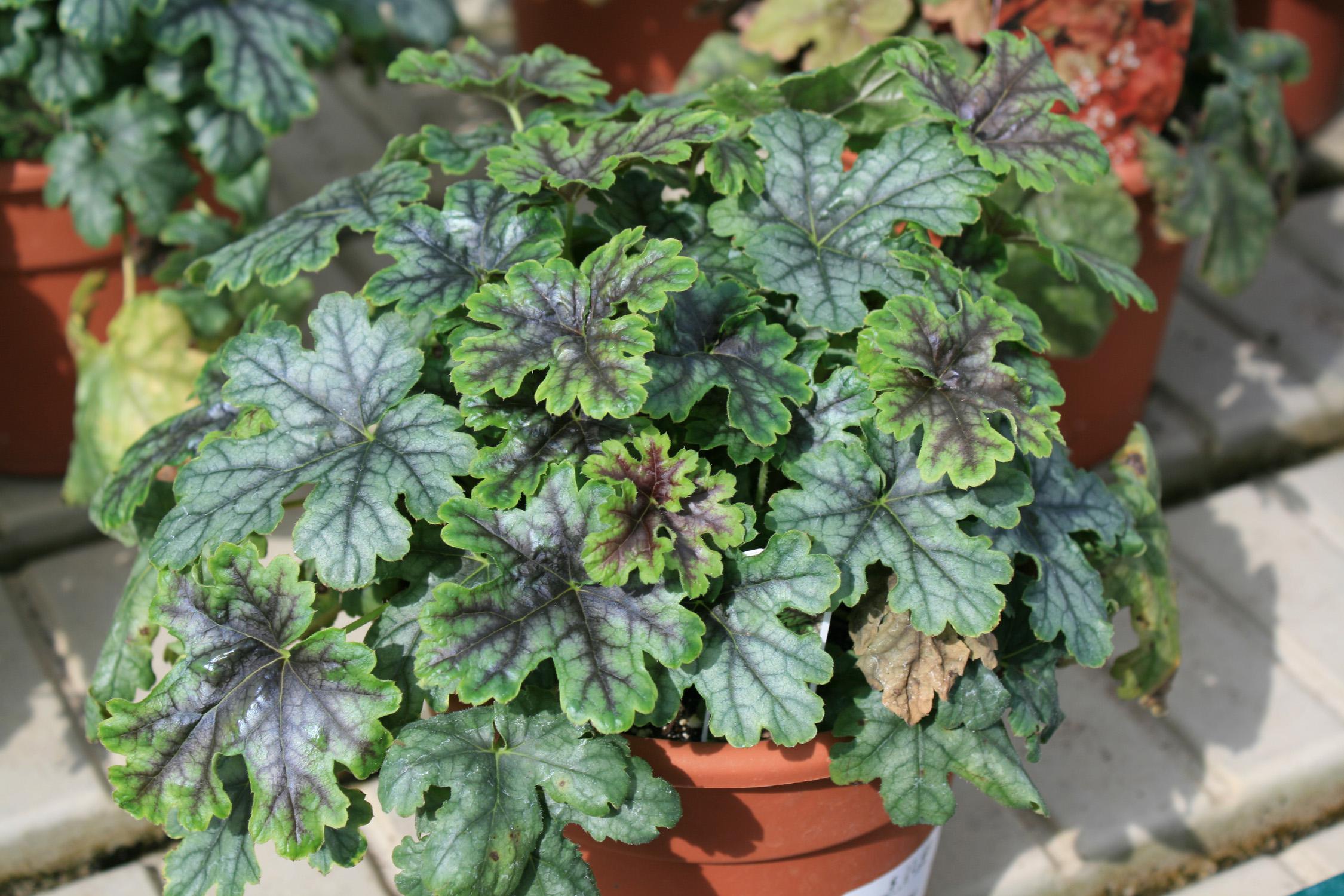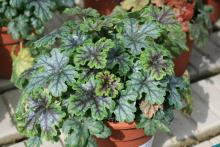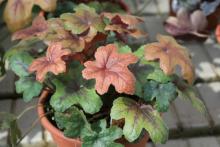Information Possibly Outdated
The information presented on this page was originally released on May 12, 2014. It may not be outdated, but please search our site for more current information. If you plan to quote or reference this information in a publication, please check with the Extension specialist or author before proceeding.
Foamy bells are colorful additions to garden spots
Did you know bells work well in the landscape?
For years, one of my favorite landscape plants has been Heuchera, commonly called coral bells. I don’t think you can beat the landscape punch of texture and color these plants bring. Coral bells bloom, but I grow them strictly for the foliage.
I’m gaining appreciation for another “bell” in my garden called Heucherella, or foamy bells. These plants are hybrids, the result of crossing Heuchera and the closely related Tiarella (foam flower).
I like the colorful, lobed foliage of these plants, as well as their small, bell-shaped flowers displayed on tall, wand-like stems that sway in the slightest puff of breeze.
If this sounds like something you’d enjoy, here are a few good choices for our Mississippi gardens and landscapes.
The leaf edges of Alabama Sunrise have sharp, deep serrations. In partial shade, the foliage develops a bright gold color with bright red veins. I have always grown this plant in full shade, where its foliage is chartreuse. Like many plants, it requires more light for the best foliage color development.
Redstone Falls is a variety that has transitioning foliage color. Its leaves emerge a coppery red and change to a light green with dark patterns in the center.
Gold Zebra is another selection that seems to change foliage color all season. New leaves display centers of bright red that extend out into the lobes. In maturing leaves, the red centers become darker as the green outer edges become more intense.
Tapestry is a foamy bells selection that reminds me of rex begonia. Its leaves have deep, multicolored lobes. The veins are dark burgundy-purple extending out into the olive-green lobes, where silver starts to develop in the leaf center. Vein coloration intensifies in cooler spring and fall weather.
If foamy bells sound like something you’d like to try in your garden, you’ll be happy to learn they are easy to grow.
Find a spot in your landscape that gets just a few hours of afternoon shade. Such a location will help develop the best color in the foliage varieties. Foamy bell selections with showy flowers benefit from more sun exposure and have stronger flowering stems.
Well-drained soil with a lot of compost mixed in is a must. Plant the crown a little higher than the surrounding grade to increase drainage and help prevent the crown from rotting. Add compost or a general garden fertilizer once in the spring to meet nutritional needs. Finish with 2 to 3 inches of mulch to help keep the soil cool.
In the southern counties, foamy bells are evergreen, and the winter months can leave the foliage looking ratty. In the spring, carefully prune away old foliage without damaging the crown. The new growth will come in strong. Later in the summer, remove spent flower stems to keep your foamy bells looking neat and trim.
In either spring or fall, carefully dig up the plant and break off pieces where you see small leaves coming out. Dip these pieces in rooting hormone and push them into the soil to spread this plant to new areas of the garden. This is also a good time to give some to friends and neighbors for them to enjoy.









